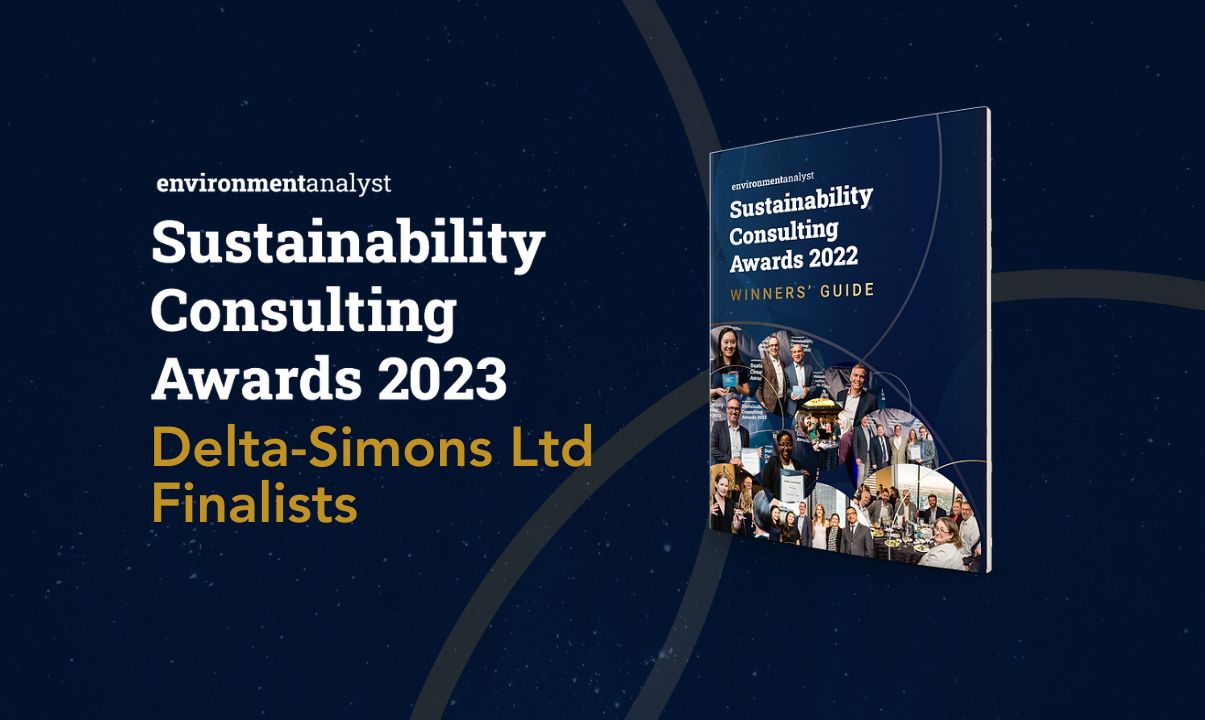Understanding Biodiversity Net Gain and DEFRA's Statutory Biodiversity Credits Prices
10 August 2023
Following the Department for Environment, Food and Rural Affairs’ (DEFRA) publication of its Statutory Biodiversity Credits Prices, Delta-Simons’ Associate Ecologist Jonathan Spencer explores the benefits and impacts.
Biodiversity Net Gain (BNG) is a policy approach in England that requires developers to generate positive effects on biodiversity through development/ construction projects of at least a 10% gain. The concept is designed to offset any potential biodiversity losses that may occur due to development, ensuring a positive impact on the environment.
The UK government introduced the BNG initiative through the Environment Bill, which became law in 2021. A 20-month transition period was put in effect, to allow Local Planning Authorities (LPA) to adopt the Environment Act 2021 into their local policies, In November 2023, BNG will become a mandatory requirement for all development in England. The main goal of BNG is to help halt the decline of biodiversity by requiring developers to retain, enhance and create natural habitats and increase the number of native species within a specific development site. However, this is not always feasible to achieve during development.
DEFRA’s latest publication, Statutory Biodiversity Credits Prices, provides developers with the option of buying statutory biodiversity credits as a last resort where they cannot achieve BNG through on-site or off-site measures on their project. It will need to be demonstrated that the mitigation hierarchy has been followed and all other options have been explored before the LPA will accept the credit payment.
The publication covers;
- The process of buying statutory biodiversity credits;
- The indicative pricing;
- The use of a statutory biodiversity metric to calculate required credits, and;
- The consideration of distinctiveness and habitat tiers in determining credit prices.
The prices mentioned in the article are indicative and are meant to give developers an idea of potential costs to help them plan ahead. Confirmed prices will be published when BNG becomes compulsory in November of this year.
The indicative pricing structure details that for each unit of a specific habitat lost, two equivalent biodiversity credits must be purchased due to the presence of a ‘spatial risk multiplier’.
Once BNG becomes mandatory in England, developers will have access to a credit sales service to purchase these credits.
How is biodiversity net gain assessed?
Updated in March 2023, the Government’s Biodiversity Metric Calculator takes a habitat-based approach used to assess an area’s value to wildlife. The metric uses habitat features to calculate a biodiversity value. Using the metric, an audit of habitats is undertaken during a field survey (it can be done using data from Preliminary Ecological Appraisals; specifically, UK Habitats survey results).
Larger areas of higher-quality habitats receive higher values, requiring more effort on the part of the developer to replace and achieve a net gain for biodiversity. Thus, there are incentives to avoid important habitats in favour of sites which are not important for biodiversity; for example, achieving a net gain following the removal of woodland would be more difficult than ornamental planning.
One challenge developers face when forced to use DEFRA’s Statutory Biodiversity Credits Prices, is the stigma with offsetting approaches.
It is good to see that DEFRA has introduced the indicative BNG credit prices as they will standardise the cost of biodiversity unit credits across all the LPAs. I have worked on several projects across England where various LPA’s have prices ranging from £10,000 -£30,000 and some even £90,000 per biodiversity unit credit. Once the costs are fixed it will provide more clarity for ecologists, developers and also LPA’s. They have obviously been priced to ensure that they are off-putting, especially if you factor in the spatial risk multiplier, iI would anticipate this to ensure that developers do not just jump straight to the payment option without demonstrating that they have tried following the mitigation hierarchy through avoidance, retention, enhancement and creation.
How can Delta-Simons help?
- Sustainable master planning – support early to identify constraints and opportunities using GIS.
- Provision of Biodiversity Net Gain Assessments by undertaking DEFRA Metric studies.
- Development of net gain strategies for developments through the provision of habitat creation plans and enhancement programs.
- Working closely with architects and landscape planners to ensure net gain is applied through the project life cycle.
- Consultation, negotiation and management of biodiversity net gain requirements with Local Planning Authorities and Natural England.
- Preparation of long-term management and monitoring plans
Need help to understand if you need credits and how many? Get in touch with our specialist ecologist team by submitting an enquiry or using the contact details below.
About The Author
Jonathan has 13 years of experience working as an ecological consultant. He has undertaken numerous Extended Phase 1 Habitat surveys, and carried out survey works on large infrastructure schemes, and smaller scale developments, including solar and wind farm schemes, and commercial, industrial, and residential developments. Jonathan holds a Natural England Great Crested Newt (GCN) survey licence and a Natural England Bat survey licence and Roost Visitors licence.
Jonathan has undertaken BNG assessments for a number of residential (both small-scale and large-scale), logistics parks, energy and public sector developments. He is proficient at undertaking the BNG assessments using the DEFRA Metric 4.0. Jonathan engages with developers/design teams early to provide a BNG risk evaluation for due diligence and is able to highlight the key issues that may result in negative score with regards to BNG and provide the suitable habitat recommendation to achieve a net gain for Biodiversity. Jonathan also reviews and comments on landscaping plans in order to provide suitable habitats to achieve a positive net gain. In addition to the net gain calculation, Jonathan is able to produce 30-year Biodiversity Ecology Management Plans (BEMP) that are required with the BNG calculation.
Contact Associate Ecologist Jonathan Spencer to help get your project back on track:
E: jonathan.spencer@deltasimons.com
T: +44(0)7580 111 946
IMPACT Magazine
Industry news delivered by Lucion Group and its subsidiary companies.
Issue 2 May 2023
No sign-up required
Lucion Group Brochure
Lucion Group is a purpose-driven company where we protect people from hazardous environments and protect the environment from the impacts of people.
Find out about our suite of services with our overview services brochure.
No sign-up required
 NexGen
NexGen
























